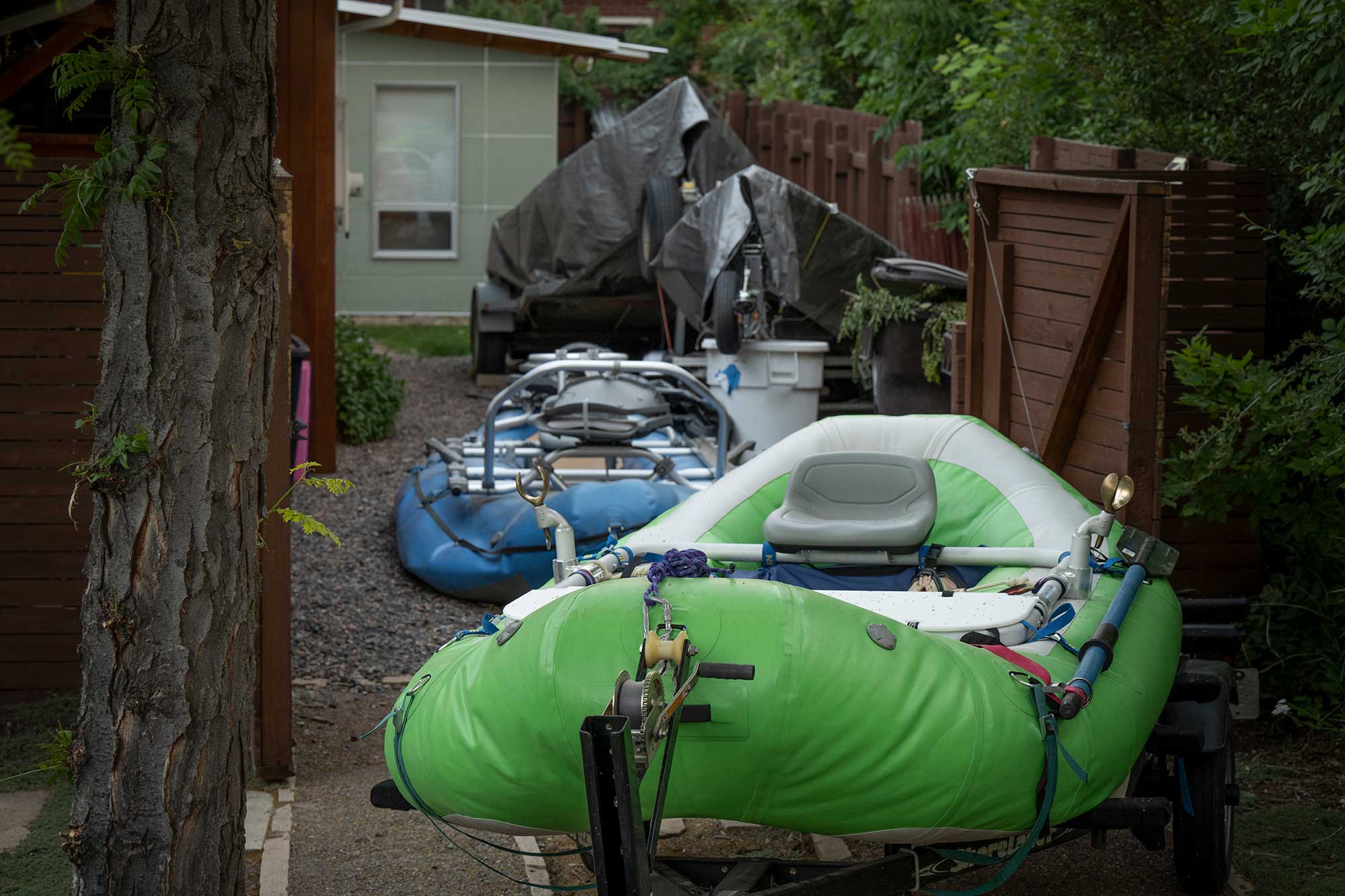
Smart Winter Boat Storage: Easy Ways to Protect Your Raft, Drift Boat, or Dory
posted by
Every fall, right about when the mornings start to freeze my coffee mug to the tailgate, I begin thinking about where—and how—I’m going to stash my boats for the winter. Sure, I’ll squeeze in a few more trips if weather allows, but snow can land any day now, and indoor storage around here costs more than a new set of oars times ten..
So over the years I’ve gotten resourceful about keeping my boats outside without wrecking them. Some tricks work better for hard boats, others for inflatables, and a few cover both categories. Hopefully these ideas help you keep your ride in good shape until spring. And if you’ve got your own hacks, I’d love to hear them!
1. Start With a Serious Wash
Before tucking your boat away, give it a thorough bath with soap and water. Simple Green is a reliable, non-toxic cleaner that plays nice with fiberglass, rubber, and everything in between.
Rinse well and dry completely. Any leftover dirt or grit holds moisture, and moisture mixed with freezing temps is a recipe for mildew, corrosion, or worse. A clean, dry boat stores better and launches faster next season.
2. Treat Inflatables With 303 UV Protectant
For rafts and other inflatables, don’t skip the sunscreen. 303 UV Protectant keeps the material flexible and prevents UV breakdown—think of it as high-octane lotion for your boat skin.
Pro Tip: Dab a little 303 into each valve before you seal it. That keeps rubber gaskets supple and helps stop slow leaks or shrinkage over the winter.
3. Drain Every Pipe and Tube
Before you hang up the frame, make sure no water is trapped inside. Even a few tablespoons can expand enough when frozen to split a pipe. A quick tip: tilt the frame vertically for a minute and listen for drips before calling it good.
4. Elevate Hard Boats and Let Them Breathe
For drift boats and dories, a simple kickstand or wooden support can be the best insurance you’ll ever buy. If snow or rain sneaks under your cover, the boat’s natural slope will send meltwater out through the drain plug instead of pooling in the hull.
Pro Tip No. 1: Pull the drain plug and plug the hole with wire mesh so mice can’t crawl in.
Pro Tip No. 2: A couple of 2×4s cut to size work just fine—no need for a fancy metal stand.
5. Use a Quality Tarp and Lock It Down Tight
Leaving your boat outside? A heavy-duty, UV-resistant tarp is your first line of defense. Pull it snug and use bungee cords both above and below to keep it from flapping itself to pieces in winter wind. OR if you've got the dough get a Over-It Raft Cover.
Pro Tip: Hook the bungees through the tarp’s lower grommets underneath the boat. That downward pull prevents gusts from catching and lifting the cover.
6. Outsmart Rodents With the Garbage-Can Method
If mice are part of your local ecosystem (and when aren’t they?), roll your inflatable and store it upright in a big plastic trash can with a lid. It’s far tougher for critters to chew through than a tarp, and the upright position keeps folds from sticking together.
7. Shape Your Cover for Drainage
When covering a boat on its trailer, remove the frame first if you can, then create a peak in the tarp so rain and snow slide off instead of pooling. If you have a self-bailing floor, you can even add a small drainage hole in the tarp’s low spot, but skip that step for non-bailers.
Pro Tip: I finally started removing my oar locks and towers each fall. The cover lasts longer, nothing tears, and snowmelt drains cleanly without snag points. Wish I’d figured that out a decade earlier.
Keep It Simple and Prevent the Spring Headache
Winter boat storage doesn’t have to involve heated barns or monthly bills. A little prep—wash, dry, treat, drain, and cover—goes a long way toward making sure your first float next season is worry-free.
If you’ve found clever ways to store your boat or keep mice out of your gear, drop a comment or tag us in your post. Boat people love learning from boat people.
